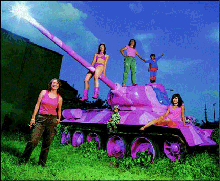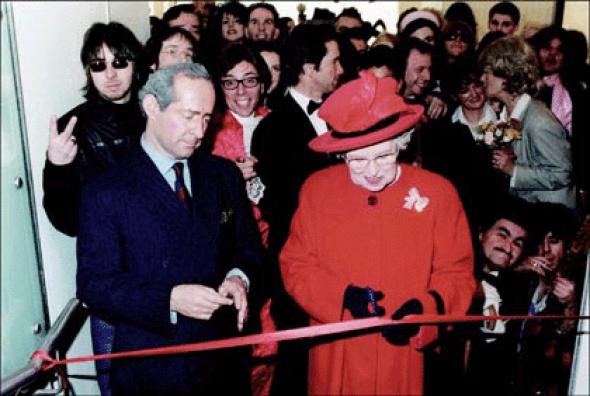Publicness
 The quirkily-titled Publicness was a combination of works, records and plans by Jens Haaning, Matthieu Laurette and Aleksandra Mir, artists who, according to the anonymous exhibition notes, ‘interrogate the notion of the public realm’, and examine ‘how diverse public projects can be represented within a gallery context, whilst maintaining the significance and meaning of the work.’ Mir herself observes that she was keen to collaborate with the other artists so as to ‘explore the wealth of options that the paradox of staging a “public art” exhibition in an institution opens up.
The quirkily-titled Publicness was a combination of works, records and plans by Jens Haaning, Matthieu Laurette and Aleksandra Mir, artists who, according to the anonymous exhibition notes, ‘interrogate the notion of the public realm’, and examine ‘how diverse public projects can be represented within a gallery context, whilst maintaining the significance and meaning of the work.’ Mir herself observes that she was keen to collaborate with the other artists so as to ‘explore the wealth of options that the paradox of staging a “public art” exhibition in an institution opens up.
I am not proclaiming that all of what you see on the walls is necessarily “art”,’ she says, ‘But it is certainly “work”: proposals, residues and ephemera, among stuff we’ve made to resonate for the occasion.’ It was just as well that Mir made this disclaimer: one of the most telling problems with this exhibition was the ‘in-between’ status of its constitutive elements, with actual works and the mere documentation of projects ambiguously, but not productively, juxtaposed, leaving it difficult to know how exactly to read such a scurrilous assemblage. Were individual items ‘art’, or reportage, or a novel but workable hybrid form? If it had been a matter of an unambiguous presentation of sketches and unrealised projects one might well accept the display as a cache of records and research materials. But with no clear distinction between intended and realised work the possibility of evaluation was displaced, the visitor becoming lost among the glut of photographs, videos, maquettes and mounted texts. Such deliberate indeterminacy resulted in irritation rather than, say, an instructive presentational conceit, just as, on the opening night, Laurette’s deployment of celebrity lookalikes posing for publicity photographs with ICA director Philip Dodd, annoyed rather than intrigued the ICA cafe’s clientele. (One presumes Mr. Dodd was ‘for real’).
Mixing everything up is a currently fashionable curatorial mannerism which can leave much to be desired. Haaning’s Redistribution (London – Karachi), in which chairs were, as it were potentially, sent between the two named locations works, according to its author, as ‘a spoken concept’, irrespective of its physical realisation. But this confusion between concept and materiality is again exasperating insofar as the claim is untrue, an assertion which leaves one wondering why anyone should bother to seriously engage with such sixth-form philosophising. The redistribution of goods is an important issue, but a bit of flaccid ‘documentation’ in a London gallery won’t do much to instigate effective social change. Mir’s model of a fake Stonehenge employed as a public park was more convincing and entertaining – of the three contributors hers was the most visually and conceptually developed.
Publicness reeked of ‘social concern’, the issues to which it referred being worthy, certainly, of sustained consideration. But perhaps this presentation would have worked better as a publication or a documentary film. The accompanying brochure left the show’s contents looking weak in the light of some provocative ideas vividly discussed in print but too often only obscurely apparent within the exhibition itself.
Publicness (Jens Haaning, Matthieu Laurette, Aleksandra Mir) // 29 January – 16 March 2003, Institute of Contemporary Arts, London
Mute Books Orders
For Mute Books distribution contact Anagram Books
contact@anagrambooks.com
For online purchases visit anagrambooks.com








